15 Useful Slack Tips You Should Know
Slack‘s simplicity and versatility quickly made it one of the most powerful productivity tools of our days, on which many teams rely in their day-to-day communication. However, in spite of its uncomplicated UI, we can still miss some of its useful and even quirky settings—at least if we don’t look at the right places.
So, in this article, we cover 15 useful tips to track these settings down and help you improve your productivity while working with Slack.
10 Useful Slack Tools For Better Productivity
Since its launch in 2013, Slack has grown to become a top team communication tool to generate conversations,... Read more
1. Browse messages by date
Slack allows you to browse messages by date in any channels. To do so, select on the “More” icon, designated with three dots icon at the sidebar of the channel. Click on the “Jump to date”, as seen below.
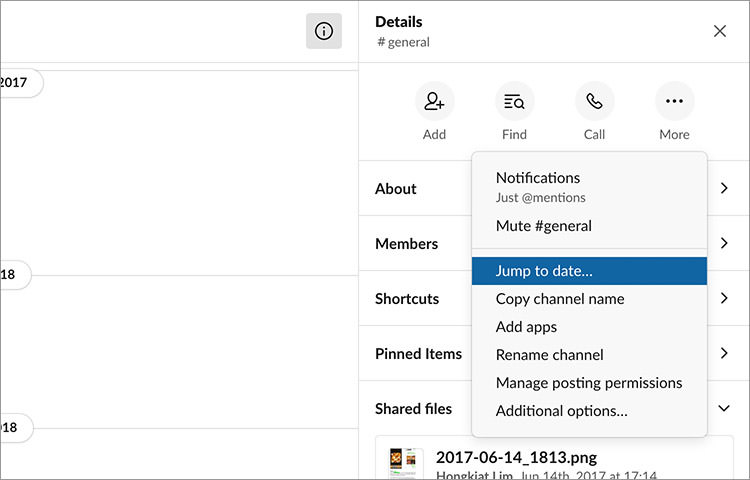
This will launch the the Slack’s calendar where you can freely browse and jump on the previous conversations at any dates, months, or years. Just keep in mind that this may work better if your Workspace is on one of the Slack’s paid plan. The Slack free-tier plan limits the number of previous conversations that you can see.
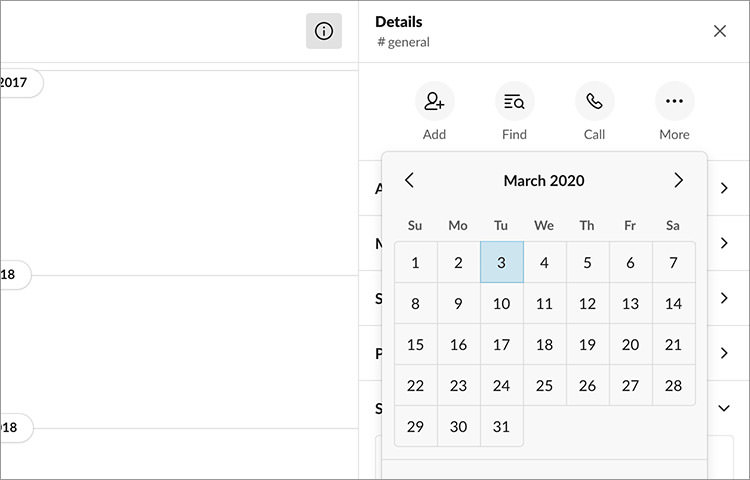
2. Share a file to public
To share a file uploaded to Slack to public, hover over that file, click on the three dots menu that appears on the right, and select the Create external link… option from the action menu.

3. Switch to compact view
If you receive a lot of messages in Slack and would like to see as many messages as you can without scrolling opt for the compact view. User profile pictures are hidden in compact view, which allows you to save a fair amount of space.
Click on your username in the top-left corner. In the dropdown menu, click Preferences, then select Messages & Media. In the Message Display > Message Theme section, select Compact to enable the compact view.
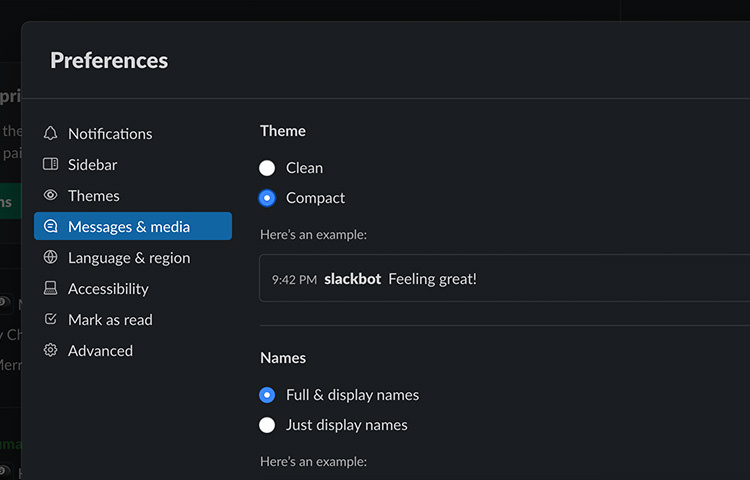
4. Add the shrugging ASCII emoji
There are just too many times when you want to let your team know that well… you have just shrugged your shoulders. Slack makes it possible to quickly add the shrugging ASCII emoji (looks like this: ¯\_(ツ)_/¯) to a message. Just enter the /shrug slash command into the message input bar.
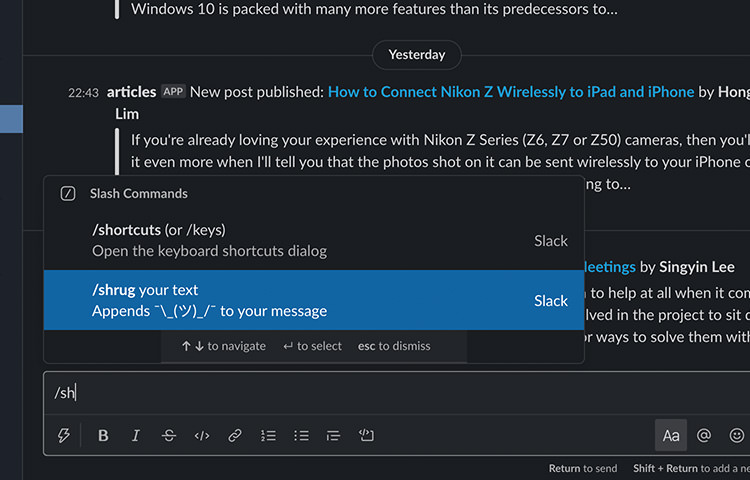
5. Stay organised with channel prefix
Conversations in Slack happen in Channels. Creating these channels using a clear predictable naming structure will allow you to ensure your workspace is organized and help people to ask questions in the right place, find information quickly, and work efficiently. By default, Slacks already created 3 default prefix, namely:
help— For questions, assistance, and resources on a topicproj— For collaboration on and discussion about a projectteam— For updates and work from a department or team
You can also create one or remove these default Channel prefix to meet the need of your orgaisation. To do so, go to the Workspace settings in this URL https://[name].slack.com/customize/channels, with [name] being the Workspace name. This URL can also be accessed from the Slack menu at Settings & administration > Workspace settings.
Within the settings page, go to the Channel Prefix section and click the “Add Prefix” button to add a new one.
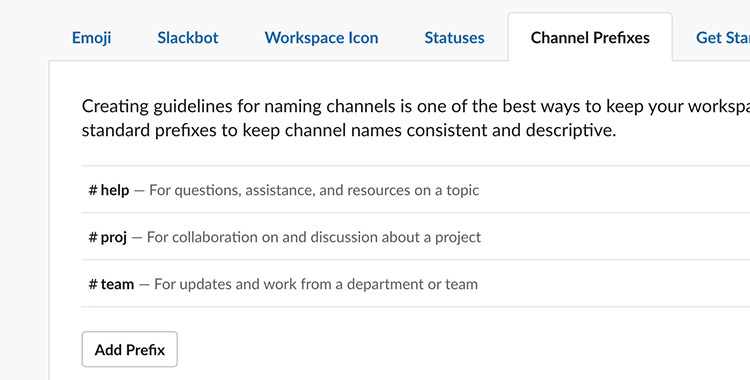
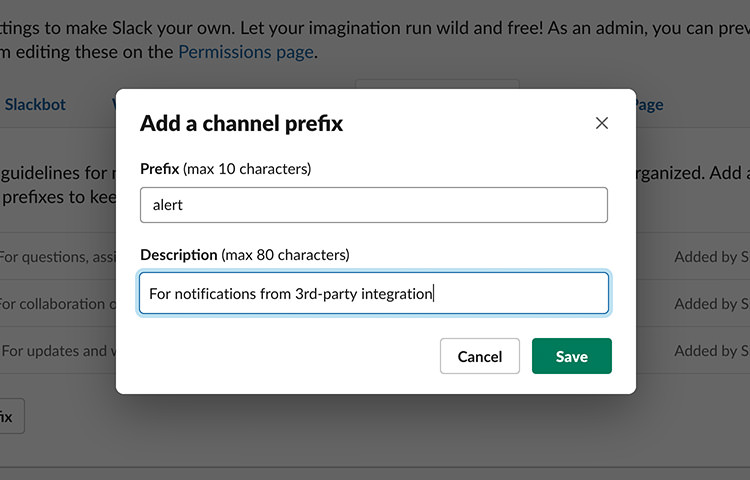
6. Assign a reminder to a message
If you get a message but want to reply only later, you can add a reminder to it. To assign a reminder to a message, take the cursor over it and click on the three dots menu to trigger the action menu. Here, hover over Remind me about this and select a delay time.
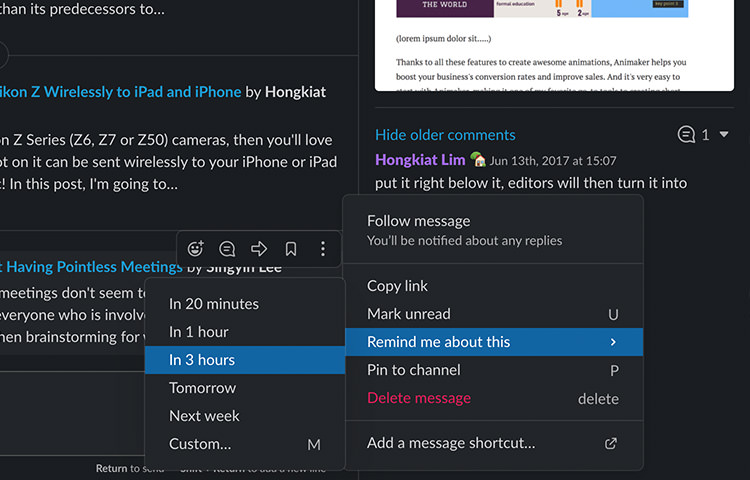
After choosing a time, you’ll immediately see an acknowledgement of the reminder in the messages window.
7. Add custom and special emojis
Slack lets you add your custom emojis. To do so, click on the top-left menu, and select Customize Slack. It opens the aforementioned customization page in the browser. In the Emoji tab, you can choose a name for your custom emoji, and upload and save the emoji image.
You can also directly go to the [myteam].slack.com/customize/emoji URL.

Slack also has a set of its own in-house custom emojis. They are not available from the customization page but from the message bar inside the Slack app. Open the emoji input box on the right side of the message bar, then click on the Slack icon to see the custom emojis.

8. Assign colors to users in compact mode
In compact mode, you can assign a color in which the username of a certain user will be displayed. To do so, enter the /color @username FFFFFF command into the message bar.
For instance, to change the color of the “johndoe” username to red, you need to enter the /color @johndoe ff0000 command. The color value uses hex codes.
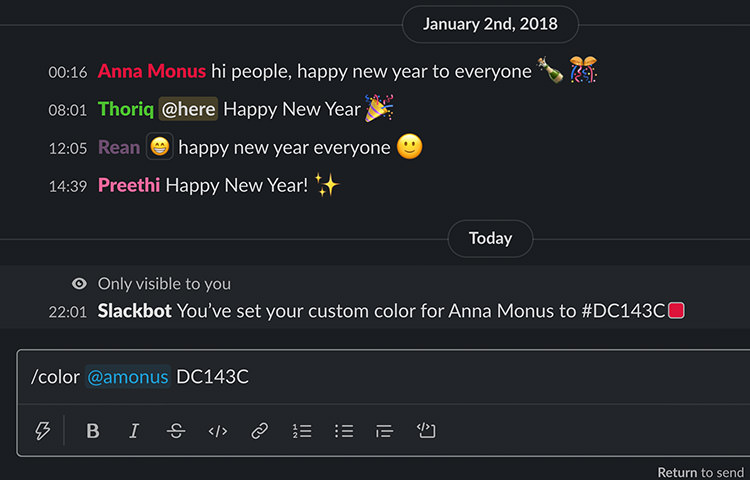
9. Stay alert with highlighted words
Sometimes you want to get notified when someone mentioned specific phrases or words that matters to you. For example, you want to be notified when someone’s mentioned your name, your secret project code, area of interest, or any other conversation you want to stay in the loop.
To set up these keywords, you can go to the “Preference” menu from the top-left of the Slack window. Then go to the “Notifications” section and add the words or phrases on the “My Keywords” section as seen below.
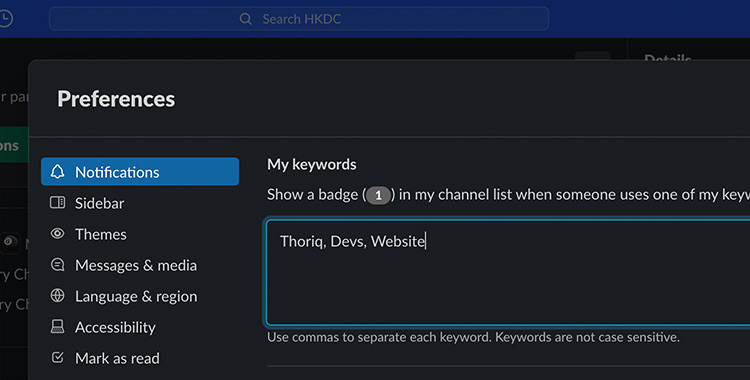
10. Syntax highlight code snippets
You can message a code block in Slack by enclosing the code with ```, but if the code block is quite big, I recommend you to use code snippets instead of code blocks. Code snippets are syntax highlighted code or text files that can be commented and downloaded by the receiver.
To create a new code snippet, click on the plus sign shown on the left of the message bar, select Code or text snippet, and create your snippet.

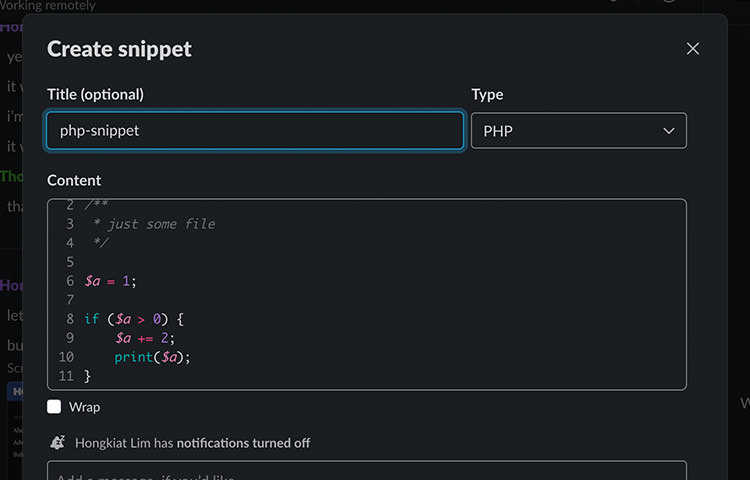

11. Remove text previews
Slack shows text previews of links by default in the Messages window. These previews can be useful, but if your team shares many links they may take up quite a few place.
You can disable the preview feature from the aforementioned Preferences > Messages & Media settings page. You need to uncheck the Show text previews of linked websites option in the Inline Media & Links section.
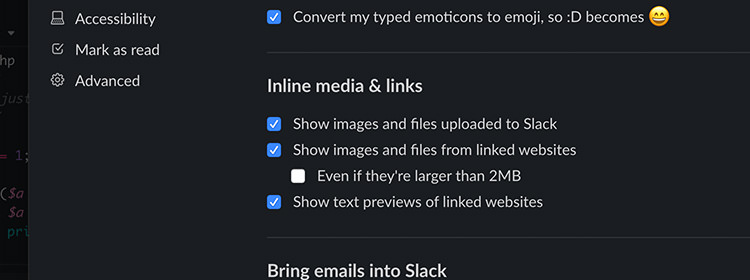
12. View keyboard shortcuts
You can quickly have a look at the list of key bindings available in Slack by pressing Ctrl + / on Windows, or Cmd + / on Mac.
13. Configure the notification sound
Slack has some options to configure the notification sound. The options can be accessed from the Preferences menu, under the Notification Settings > Sounds section.
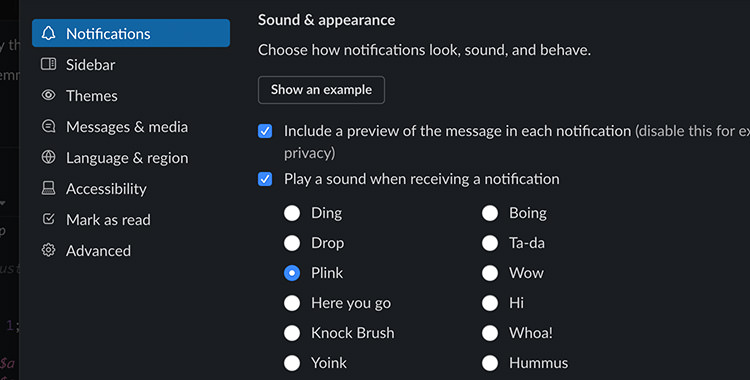
14. View team stats
You can view your team’s statistics on the [yourteam].slack.com/stats web page. Other than typing the URL into the address bar of your browser, you can also reach it from the Slack app by selecting the Statistics option in the top-left menu.
The stats page shows a set of metrics including total messages in the team account, number of readers, number of posters, and files created.
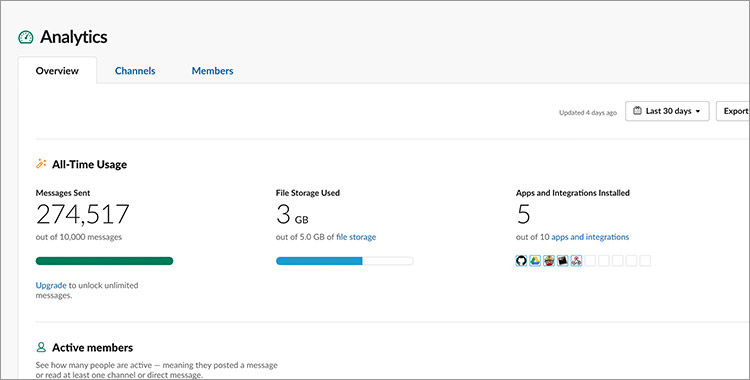
15. Assign a default skin tone to emojis
You can make your emojis have a default skin tone. To do so, access the Emoji popup box by clicking on the Emoji icon on the right of the message bar.
Here, click on the Skin Tone option displayed in the bottom-right corner, and select the one you want to set as the default skin tone for your emojis.

Read Also: How to Create Custom Slash Commands in Slack